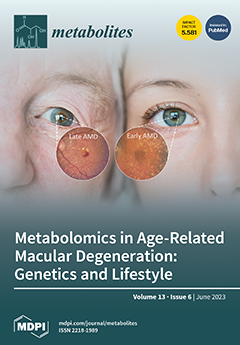Cadmium (Cd) is a potentially hazardous element with significant biological toxicity, negatively affecting plant growth and physio-biochemical metabolism. Thus, it is necessary to examine practical and eco-friendly approaches to reduce Cd toxicity. Titanium dioxide nanoparticles (TiO
2-NPs) are growth regulators that help in nutrient uptake and improve plant defense systems against abiotic and biological stress. A pot experiment was performed in the late rice-growing season (July—November) 2022 to explore the role of TiO
2-NPs in relieving Cd toxicity on leaf physiological activity, biochemical attributes, and plant antioxidant defense systems of two different fragrant rice cultivars, i.e., Xiangyaxiangzhan (XGZ) and Meixiangzhan-2 (MXZ-2). Both cultivars were cultivated under normal and Cd-stress conditions. Different doses of TiO
2-NPs with and without Cd-stress conditions were studied. The treatment combinations were: Cd−, 0 mg/kg CdCl
2·2.5 H
2O; Cd+, 50 mg/kg CdCl
2·2.5 H
2O; Cd + NP1, 50 mg/kg Cd + 50 TiO
2-NPs mg/L; Cd + NP2, 50 mg/kg Cd + 100 TiO
2-NPs mg/L; Cd + NP3, 50 mg/kg Cd + 200 TiO
2-NPs mg/L; Cd + NP4, 50 mg/kg Cd + 400 TiO
2-NPs mg/L. Our results showed that the Cd stress significantly (
p < 0.05) decreased leaf photosynthetic efficiency, stomatal traits, antioxidant enzyme activities, and the expression of their encoding genes and protein content. Moreover, Cd toxicity destabilized plant metabolism owing to greater accretion of hydrogen peroxide (H
2O
2) and malondialdehyde (MDA) levels at vegetative and reproductive stages. However, TiO
2-NPs application improved leaf photosynthetic efficacy, stomatal traits, and protein and antioxidant enzyme activities under Cd toxicity. Application of TiO
2-NPs decreased the uptake and accumulation of Cd in plants and levels of H
2O
2 and MDA, thereby helping to relieve Cd-induced peroxidation damage of leaf membrane lipids by enhancing the activities of different enzymes like ascorbate peroxidase (APX), catalase (CAT), peroxidase (POS), and superoxide dismutase (SOD). Average increases in SOD, APX, CAT, and POS activities of 120.5 and 110.4%, 116.2 and 123.4%, 41.4 and 43.8%, and 36.6 and 34.2% in MXZ-2 and XGZ, respectively, were noted in Cd + NP3 treatment across the growth stages as compared with Cd-stressed plants without NPs. Moreover, the correlation analysis revealed that the leaf net photosynthetic rate is strongly associated with leaf proline and soluble protein content, suggesting that a higher net photosynthetic rate results in higher leaf proline and soluble protein content. Of the treatments, the Cd + NP3 (50 mg/kg Cd + 200 mg/L TiO
2-NPs) performed the best for both fragrant rice cultivars under Cd toxicity. Our results showed that TiO
2-NPs strengthened rice metabolism through an enhanced antioxidant defense system across the growth stages, thereby improving plant physiological activity and biochemical characteristics under Cd toxicity.
Full article






